
Ecommerce Email Marketing: The Ultimate Beginner’s Guide
Ecommerce email marketing is the new black, or should I say the old black that keeps trending?
Online business owners have used some of the best marketing channels to take their business to the next level.
However, there’s nothing more profitable than email marketing for eCommerce. Email is the sharpest arrow in your marketing quiver with an ROI that will make your jaw drop! And like a marketing Robin Hood you need to use it to fight against low conversion rates.
If you are new to the game of eCommerce, or you’ve just taken your brick and mortar business online, worry not!
Today, we’ll learn everything there is about email marketing for eCommerce.
What is eCommerce email marketing?
Email marketing for eCommerce is all about generating sales through successful email campaigns.
These campaigns can be as simple or as complex as you like. Their goal, though, is to convert your subscribers into customers.
While using email marketing for your eCommerce business is simple, there’s more to consider.
Creating a campaign is a matter of mastering a campaign editor. However, delivering a high-converting email is a whole new thing.
When your visitors convert into subscribers, they only want to see one thing in their inbox: amazing offers. And let’s be honest, who can resist amazing offers?
Ecommerce email marketing will help you deliver the right message at the right moment. For instance, Misty’s Florist grabs the opportunity to deliver a relevant email to boost sales.
Admittedly, campaigns that cover a customer’s specific needs before they emerge are quite successful and can drive more engagement and traffic.
After all, who doesn’t want the perfect solution delivered at the right time?
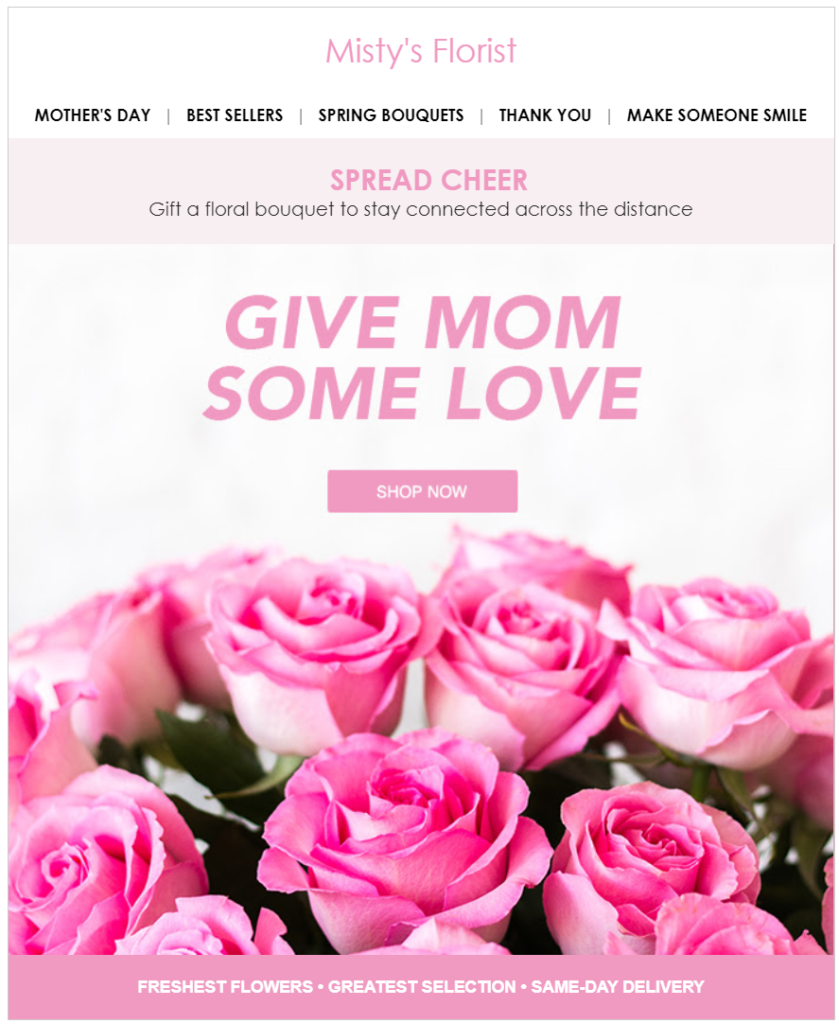
Now that we covered the definition of eCommerce email marketing let’s take a look at the benefits.
Also, don’t forget to buy your mom some flowers!
Why do you need email marketing for eCommerce?
Let’s be honest. Email is everywhere! And since the majority of businesses use it, then there must be a reason for it, right?
Knowing the benefits of email marketing for your eCommerce business will help you strategize your marketing efforts better.
So, let the benefits come forth!
1. Email marketing for eCommerce has the best ROI
Using email marketing is one of the most cost-efficient marketing channels you have.
Strategically speaking, 91% of marketers believe in the power of email, setting it as the most vital channel for their business.

But apart from that, DMA’s report further shows that when it comes to ROI, email is unbeatable. Moreover, for small businesses, email marketing will offer you the perfect way to contact and nurture your new leads.
Furthermore, when it comes to getting more customers, email is perfect for boosting your customer retention!
Through specific email campaigns, you can motivate your customers to buy more.
Moreover, use email to minimize acquisition costs and promote customer-business relationships.
Soon you’ll see your business flourish!
2. Email marketing makes eCommerce personal
Social media is excellent for giving updates to your audience.
However, when you create a new post, you address your followers as a whole. That’s great if you need to give general updates and post something to entertain your audience.
While this tactic is great, social media can’t offer you what email does.
By using your email marketing software, you can leverage the power of eCommerce personalization to deliver messages that will resonate with your audience.
Email marketing will allow you to address each subscriber individually and shape your message according to their interests.
Consequently, your subscribers will be more than happy to engage with your campaigns. For instance, here’s how Tone It Up personalizes their emails to make them more effective and personal.

3. Measure and analyze your email campaign performance
Measuring the performance of your marketing campaigns will give you valuable insight into your customers’ behavior.
For that, you need your email service provider’s powerful reporting tools.
Tracking your open and click-through rates can be easy, so don’t forget to monitor them!
Furthermore, knowing how your audience interacts with specific campaigns will help you tweak them and improve their performance.
Moosend, for instance, has an advanced reporting system that lets you track your campaigns and gives you accurate results about your open and bounce rates.
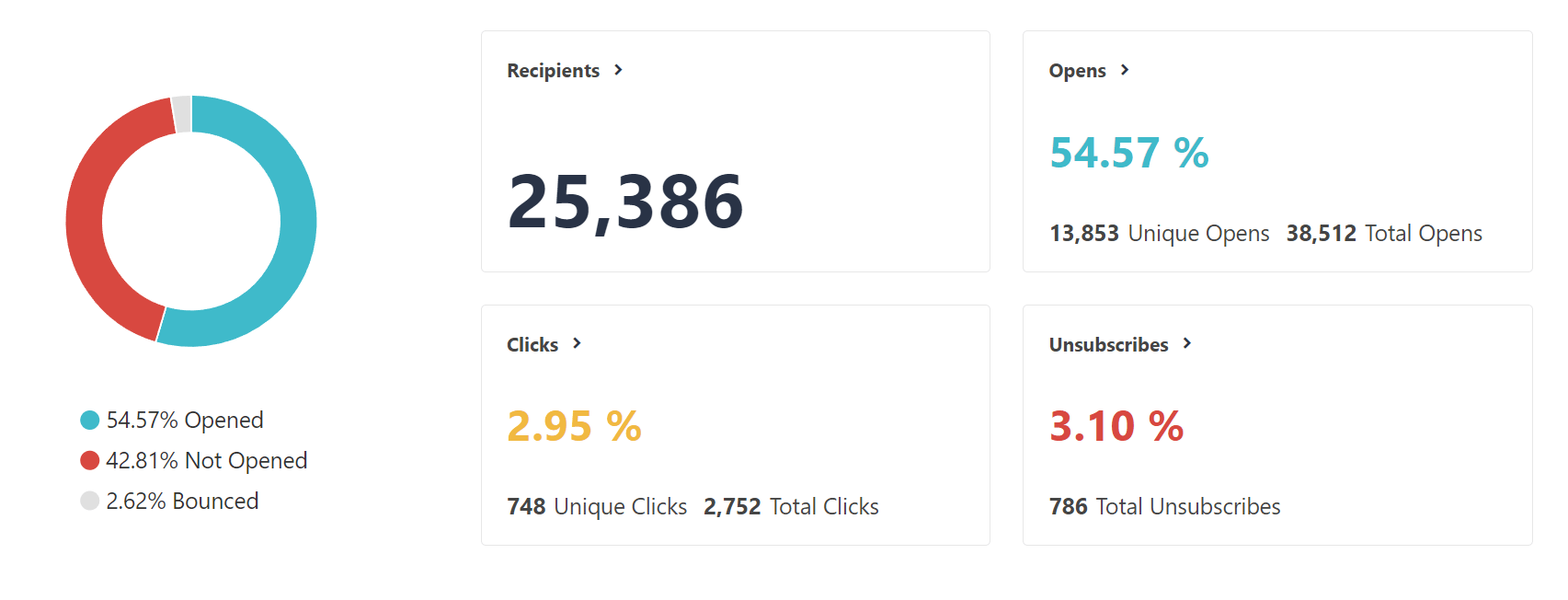
Furthermore, you can leverage the data to retarget your non-openers with more appealing campaigns.
That way, you’ll prevent low engagement and boost your conversions.
4. Mobile-friendly and accessible
Emails are popular because they are easy to create, and anyone with a device can access them.
As a mobile device owner, then you already know that.
Also, I’m sure those late-night offers from ASOS or Target still haunt you.
I know they do for me. But, you know what they say, it is what it is.
Especially for mobile-first users, checking emails is among the most popular daily activities for smartphone users.
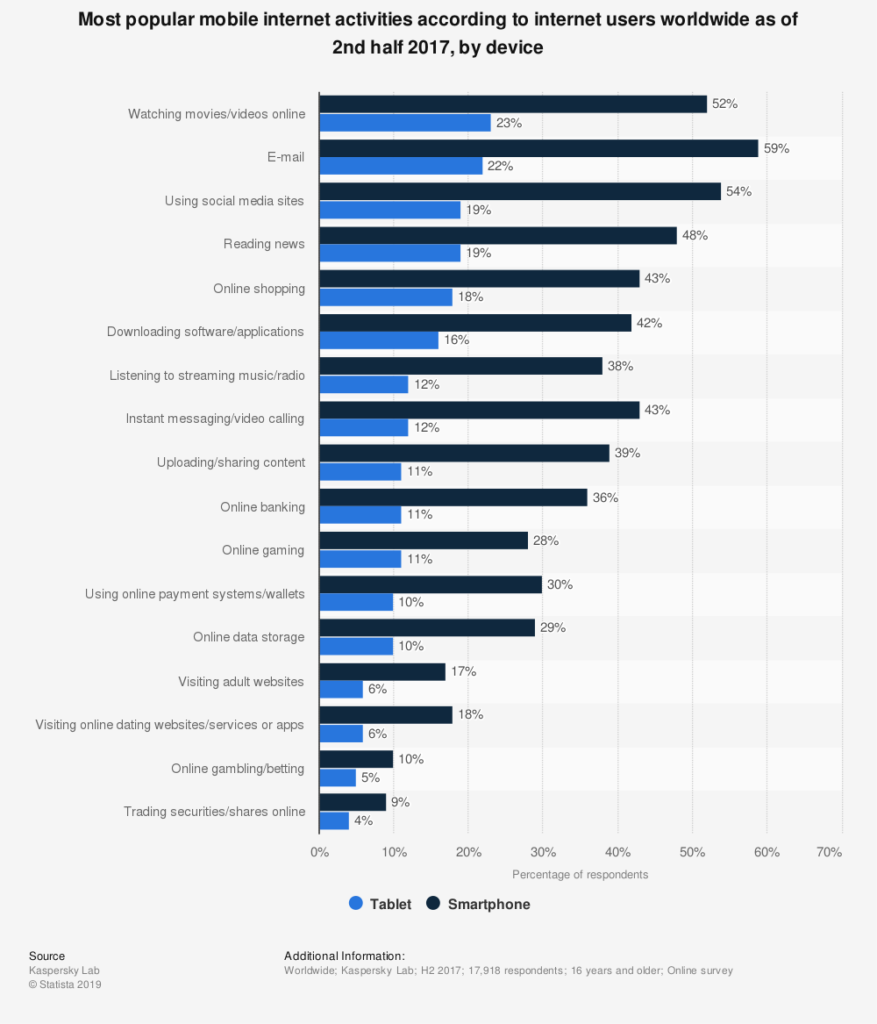
As more and more consumers prefer mobile devices to receive news and updates from their favorite brands, eCommerce email marketing will help you engage and convert them.
Having a flexible tool to capture every potential customer is vital.
The age of mobile is upon us, so what’s better than mobile-optimized email campaigns? I’ll tell you: absolutely nothing!
5. Increase website and landing page traffic
Increasing your traffic is crucial for a healthy growing company.
For your eCommerce business, non-existent or low website traffic will be the bane of your online existence.
But, dear friend, email marketing is here to save the day! Through sophisticated CTAs, offers, and incredible copy, you can entice even the most difficult subscribers to visit your website.
50% off everything on-site? That’s a steal! A summer sale that’s too good to be true, but it actually is? Trust me; they’ll click.
For example, if you received an email from Topshop like this one, wouldn’t you just click on it and see for yourself?
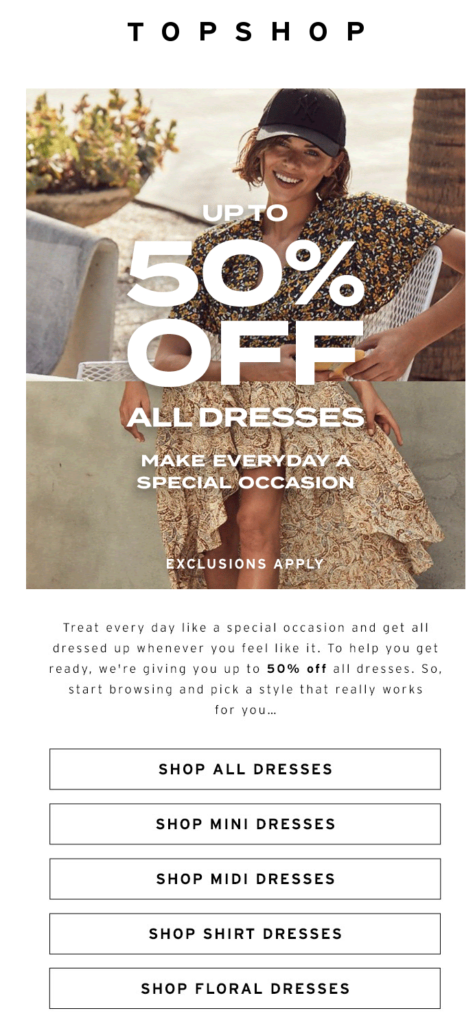
I’m risking passing off as Rebecca Bloomwood from “Confessions of a Shopaholic” here, but you get the point.
When your message is appealing enough and has the right incentive, your subscribers will click.
Also, with this tactic, you can connect your landing pages and expect higher lead generation.
How to get started with eCommerce email marketing
Now that we saw some of the benefits of eCommerce email marketing let’s get down to business to defeat low engagement and conversion rates.
Buckle up because this will be a ride to remember!
1. Choose an email marketing automation platform
It’s dangerous to go alone into eCommerce territory. Take this email marketing software with you!
If you were to email your subscribers manually, it would take days! Or even weeks! No one wants that.
Luckily, marketing technology can offer you a variety of incredible tools to get your marketing going.
An email marketing automation platform is the best way to achieve great results. For instance, a platform will allow you to create unique campaigns, build a mailing list, segment your audience, and monitor performance.
Selecting the most suitable and effective platform, though, can’t be random. For that, you need to know your options, what they offer, and how you can best utilize them to fulfill your goals.
However, if you want to find the best email marketing service, you need to consider a couple of things first.
The cost
Having an efficient marketing tool doesn’t mean you have to pay for it in gold.
Unfortunately, some email marketing platforms are more costly than others. Usually, it all depends on the number of features you get.
However, you shouldn’t think that just because a platform is expensive, it’s automatically that good.
Before choosing your platform, you should take advantage of any trials or free plans.
That way, you’ll be able to test the software and see whether it suits you or not.

You can sign up for Moosend’s software and get started with eCommerce email marketing in a breeze.
Moreover, when you register, you’ll also gain access to online forms, landing pages, transactional emails, and more. That’s pretty much everything an eCommerce store needs to get started.
So, think carefully about the tools and their capabilities and choose wisely to avoid breaking the bank or get extra services you may not need.
The extra features
Ecommerce email marketing is all about being smart with the tools you use. For this reason, email marketing software has evolved to suit the needs of modern businesses.
Various email marketing companies have already added new features to their platforms.
Consequently, they have created all-in-one solutions that every eCommerce business can use to implement a successful marketing plan.
Using an all-in-one platform will help you save valuable time and money.
Moosend, for instance, has taken this into account and has developed a series of lead generation tools to boost your eCommerce endeavors.

With subscription forms and landing pages, you can easily capture more leads.
Then, just create an awesome email campaign and convert your audience!
2. Build your first eCommerce mailing list
Now that you found that shiny new platform, it’s time to start building a mailing list. The easiest way to build one is to capture your visitors’ emails. But, you may ask, how can I do that?
The answer is simple, dear friend, but you’ll need a few things: your website, your email marketing platform, and a cool online form.
Capturing your visitors’ addresses is essential to turn those visitors into your customers.
So, let’s see how to build that list!
Create a newsletter signup form
The first thing you need to build your list is to create an effective newsletter signup form.
You can do that by using a simple online form builder and your creativity.
Then, choose the form type that suits you best and edit it to match your website and intention.
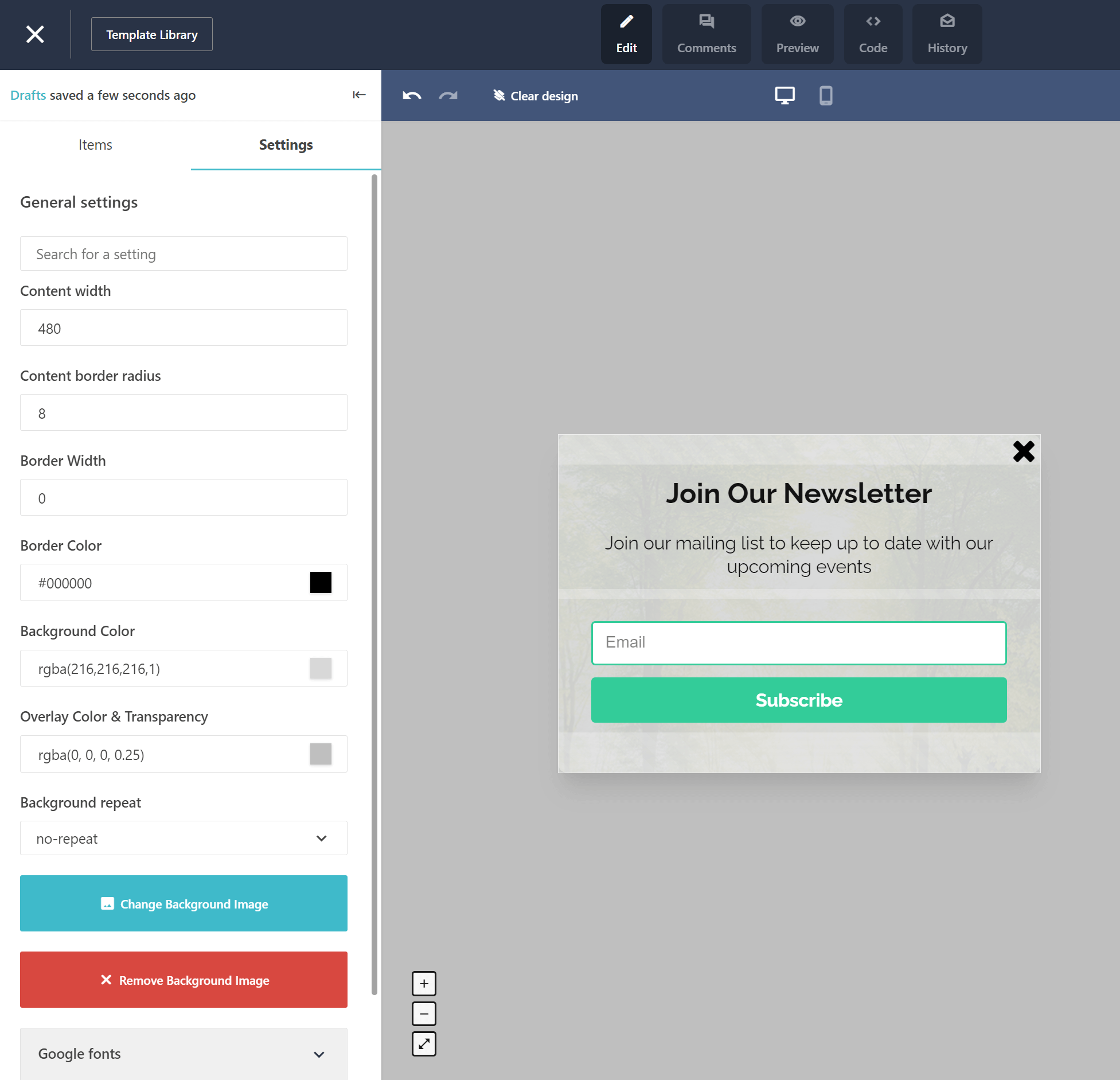
When it comes to types, there are several options you can use depending on what you want to achieve.
Here are the most common types of online forms that every eCommerce store uses to capture email addresses:
- The modal popup form that resembles the one shown above
- The inline form that appears within the content of a page
- The floating bar form found at the top or bottom of your page
- The sticky form that sticks with the visitor as they scroll
- The full-page form that covers a visitor’s entire page
After you choose the right form type, you need to edit it. While creating a form is no rocket science, there are three things you need to consider before designing it.
Firstly, each of your forms should have a short description telling your visitors why they need to join your list. Then, tell them about the exclusive news and offers they’re going to receive!
Here’s an example from Skullcandy:

Along with that, you should include the right number of fields.
Keep in mind that collecting information about your subscribers will allow you to target them better.
So, capturing information like their names, birthdays, and professions will let you deliver personalized content and divide them into groups with similar interests.
Finally, your form won’t be complete without a clear call-to-action that stands out. After your form is ready, you can embed it on your website and start building your first list.
Design a dedicated landing page
Did you know that you can leverage the power of landing pages to build your mailing list?
If this is the first time you hear about these famous lead gen pages, then you can always see our landing page series on how to create a landing page.
In a few words, though, landing pages are different from your homepage.
Their goal is to convert a visitor either by incentivizing them to buy a product or giving you their contact information. Some of the basic features that every successful landing page should have are:
- An irresistible value proposition
- An appealing copy
- Stunning visuals
- A clear CTA that stands out
With these in mind, you can create beautiful yet effective landing pages to expand your list.
Here’s how Daily Harvest uses a landing page to collect email addresses and nail their eCommerce email marketing strategy.
Keep in mind that if you create a landing page to boost your mailing list, you should consider some of the basic principles of landing page optimization.
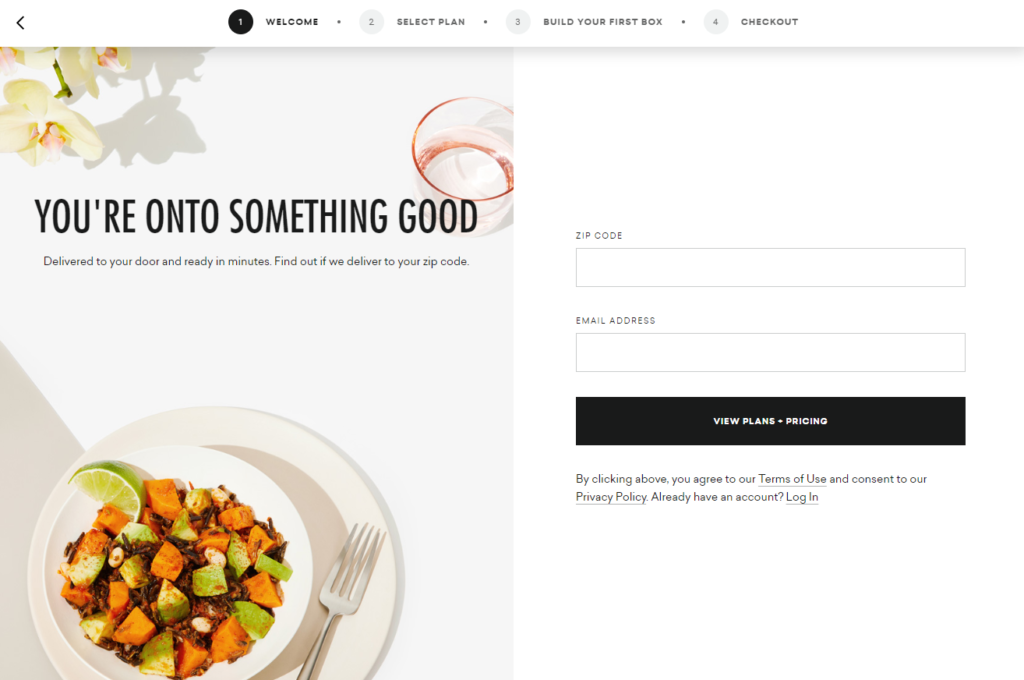
While there are more ways to build and expand your list, creating a form and using a landing page are the first things you need to master.
If you need more information, make sure to check our in-depth post about email list building.
3. Map the customer journey
Now that you know how to build your list, it’s time to think about the customer journey.
When we talk about this journey, we refer to the different stages that a customer goes through, from being aware of a brand to making a purchase.
For eCommerce businesses, it’s essential to have a clear idea of the different customer behaviors that will lead to conversion.
In short, the customer journey consists of 5 major stages:

Analyzing these stages based on existing data will help you make better decisions and improve the buying experience.
So, how does the customer journey affect eCommerce email marketing? Mapping your customer journey will allow you to target your customers at each of these stages with the right campaign.
A customer who is at the awareness stage can’t receive the same message as a customer who is at the purchase stage. For instance, let’s say that you just discovered a new grooming product brand, and you subscribe to their newsletter.
The logical thing is to receive a friendly welcome email to greet you, right?
However, instead of that, you receive this email:
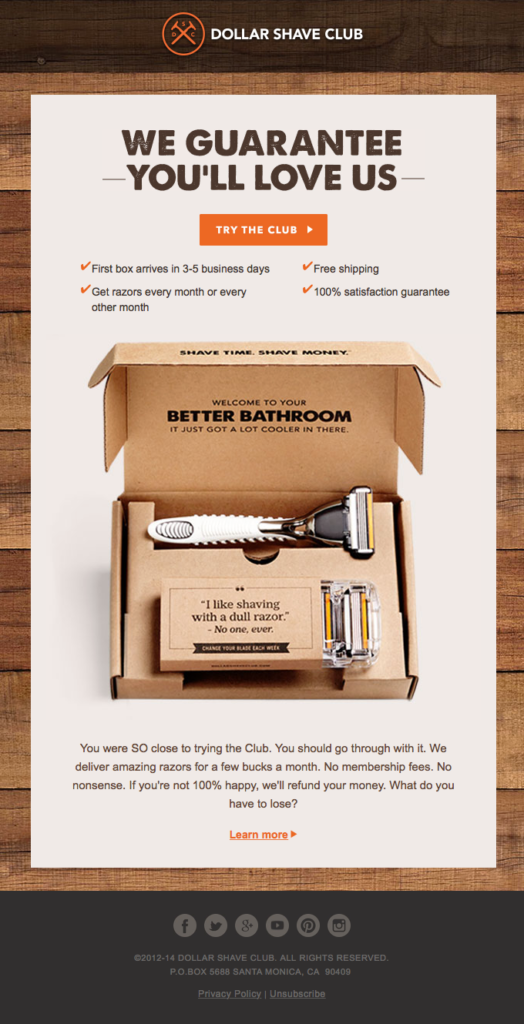
While there’s nothing wrong with the message, this campaign would be more suitable for a customer who’s at the consideration stage.
Sending a welcome email will make a great first impression and familiarize your new customer with your eCommerce store.
Therefore, you should always think about the stage your customers are in and then deliver the right message. And speaking of that…
The right campaign at the right stage
Sending the right message at the right time will increase the success of your eCommerce email marketing.
To give you a helping hand, let’s see some of the campaigns you need to create at each stage of the customer journey.
Awareness Stage
In this stage, you want to greet your new customers.
A friendly welcome email with an offer will make a positive first impression and lead them closer to conversion.
Furthermore, consider sending educational emails to familiarize your audience with your products and let them know what differentiates you from your competitors.
This eCommerce email campaign from Hickies is perfect for new shoelace customers:
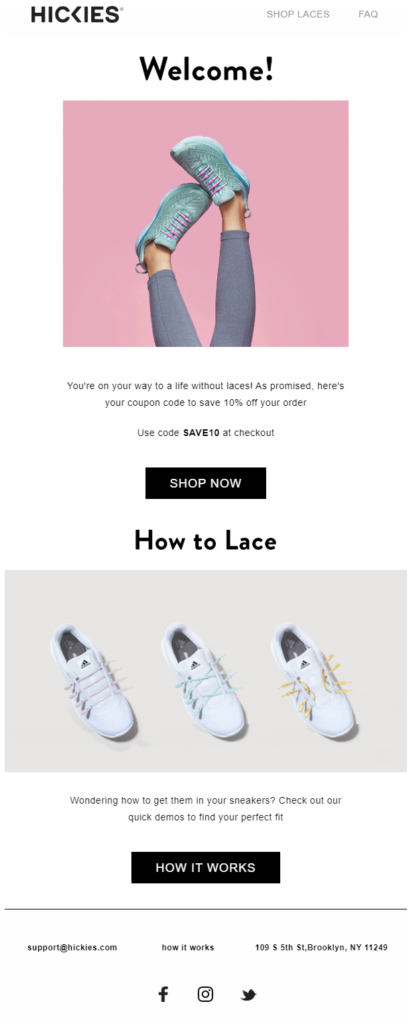
Consideration Stage
The consideration stage is one of the most crucial parts of the customer journey. Here, your potential customers will look around your website and even add some items to their cart.
What you need to get them to the next stage are some attractive promotional and customer review-infused emails to boost their confidence.
However, since they might not be sure about the purchase, they might abandon their baskets. Cart abandonment emails are also a must to get your abandoners to go back to their carts and finish the purchase.
Here’s a great example from Graze that incentivizes its potential customers to subscribe and test its product:
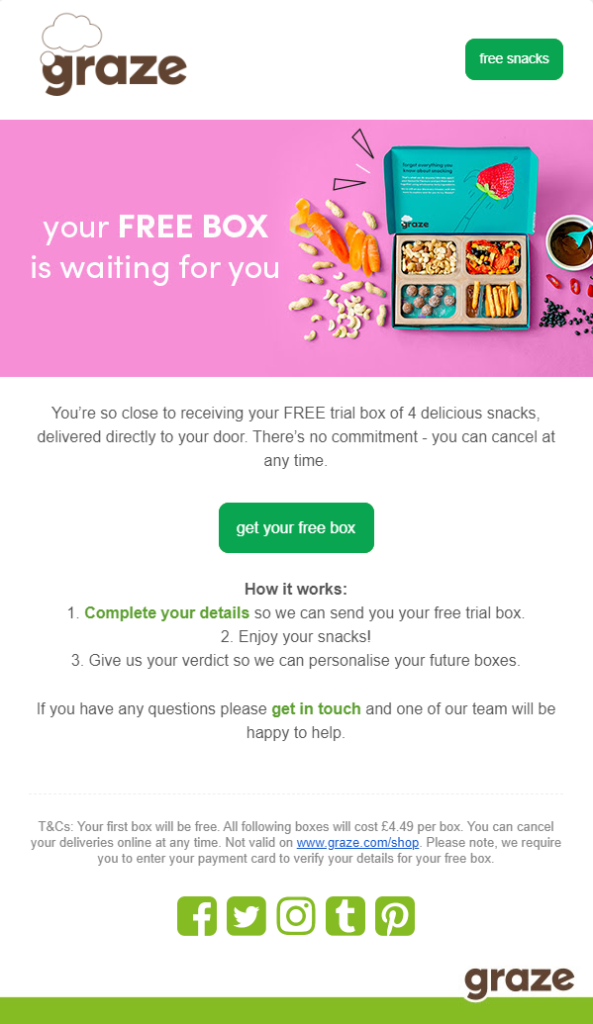
Purchase Stage
The purchase stage is all about delivering messages concerning your customers’ new purchases.
Your eCommerce business should always send these emails to ensure that a customer is up-to-date with their orders.
Moreover, since customers can be impatient s, you can use eCommerce email marketing to inform them about shipping updates and delivery status.
This will improve their experience and increase the chance of giving you positive reviews. Here’s a simple example from Blizzard Entertainment:
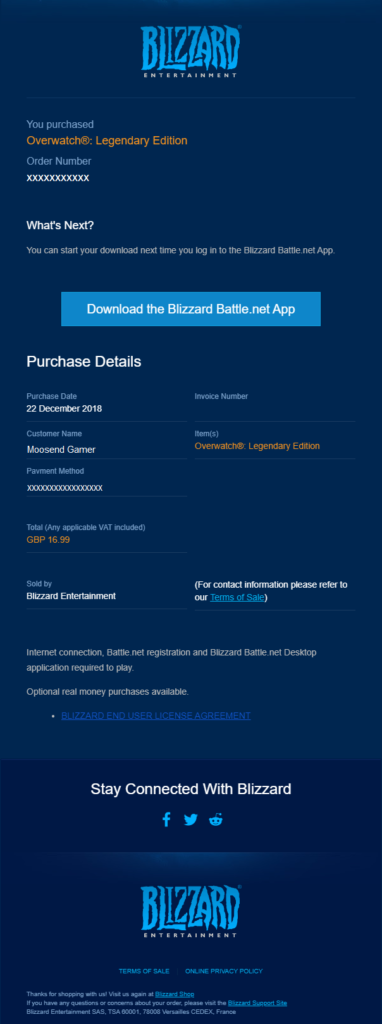
Retention Stage
With acquisition costs being higher than retention costs, you need to ensure that your satisfied customers will purchase from you again.
To ensure retention, you need to give your customers more reasons to buy from you.
To do that, you should thank them for being your customers, ask for their feedback, and offer special discounts.
Here’s a stunning example from Burt’s Bees asking for customer feedback for a reward:

Advocacy Stage
Reaching advocacy is every eCommerce store’s dream!
Here, your audience has already identified your value and your potential for greatness.
That’s where you need to strike!
After collecting customer feedback, you can turn your satisfied customers’ reviews into a powerful conversion weapon.
Here’s an example from Sigma Beauty:

4. Leverage the power of email automation
When we talked about the customer journey, we saw that your customers go through five stages before becoming loyal shoppers.
During their journey, your potential buyers will go through numerous decisions. To name but a few, they’ll interact with your website, add products to their carts, and click on your online forms.
Mapping these behaviors is your secret weapon to target them with the right message, but how?
Leveraging the power of email marketing automation does not only allow you to create a campaign but send them to the right person at the right time.
To do that, you need to set up specific workflows that will be triggered the moment your visitor takes action.
Email automation is a must for eCommerce email marketing, so let’s see how you can use automation the right way.
Choose the right workflow
Tony added a new leather jacket to his cart, but since he is busy, he forgot all about it. Two hours later, he found an email in his inbox. Then, two days later, he is the proud owner of a new shiny jacket.
Ladies, beware!
So, how did Tony turn from a cart abandoner into a satisfied customer with style?
A miracle! I’m just kidding, it all happened thanks to email automation!
When we talk about automation, you need to keep in mind that just because everything happens automatically, it doesn’t mean that it’s impersonal and robotic.
Thanks to personalization, you can set up outstanding campaigns to get your abandoners to come back and convert.
To do that, you need to log into your email marketing automation platform and find the automation list. There, you’ll get the option to create a new automation for your eCommerce store.
To make things easier, Moosend has already created numerous pre-built recipes to get you started.
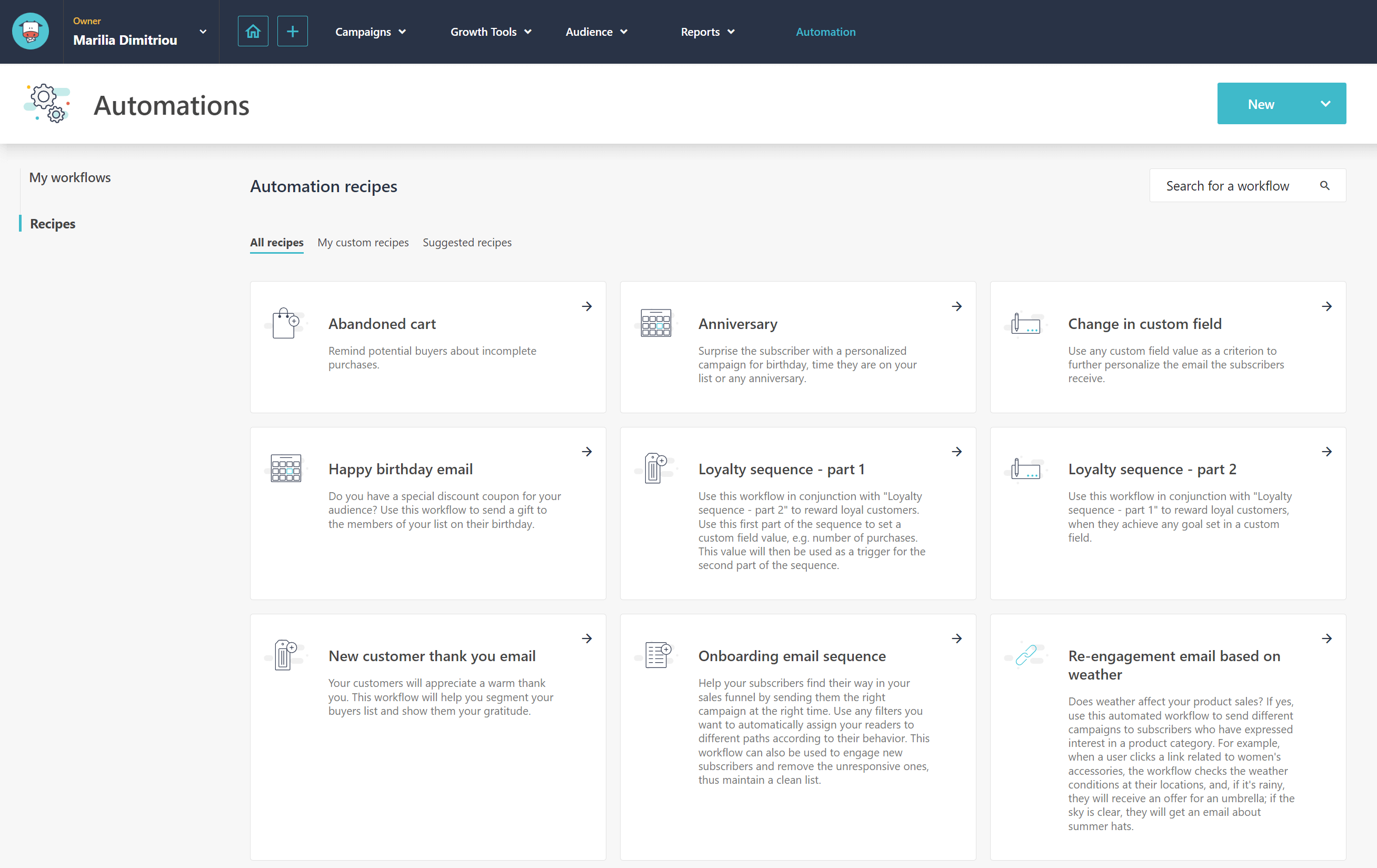
Now that you found your workflow, it’s time to set it up!
Set up your amazing automation
As you can see, your email marketing automation platform should allow you to create a variety of workflows to cover the needs of your store.
Now, you can select one and customize it accordingly!
Choosing one of the pre-made recipes will save you time and help you get started with automation. Of course, you can always create your own!
It might need a bit of practice at first, but the more you get familiar with your platform, the easier it will be. Here’s what an abandoned cart recipe should look like:
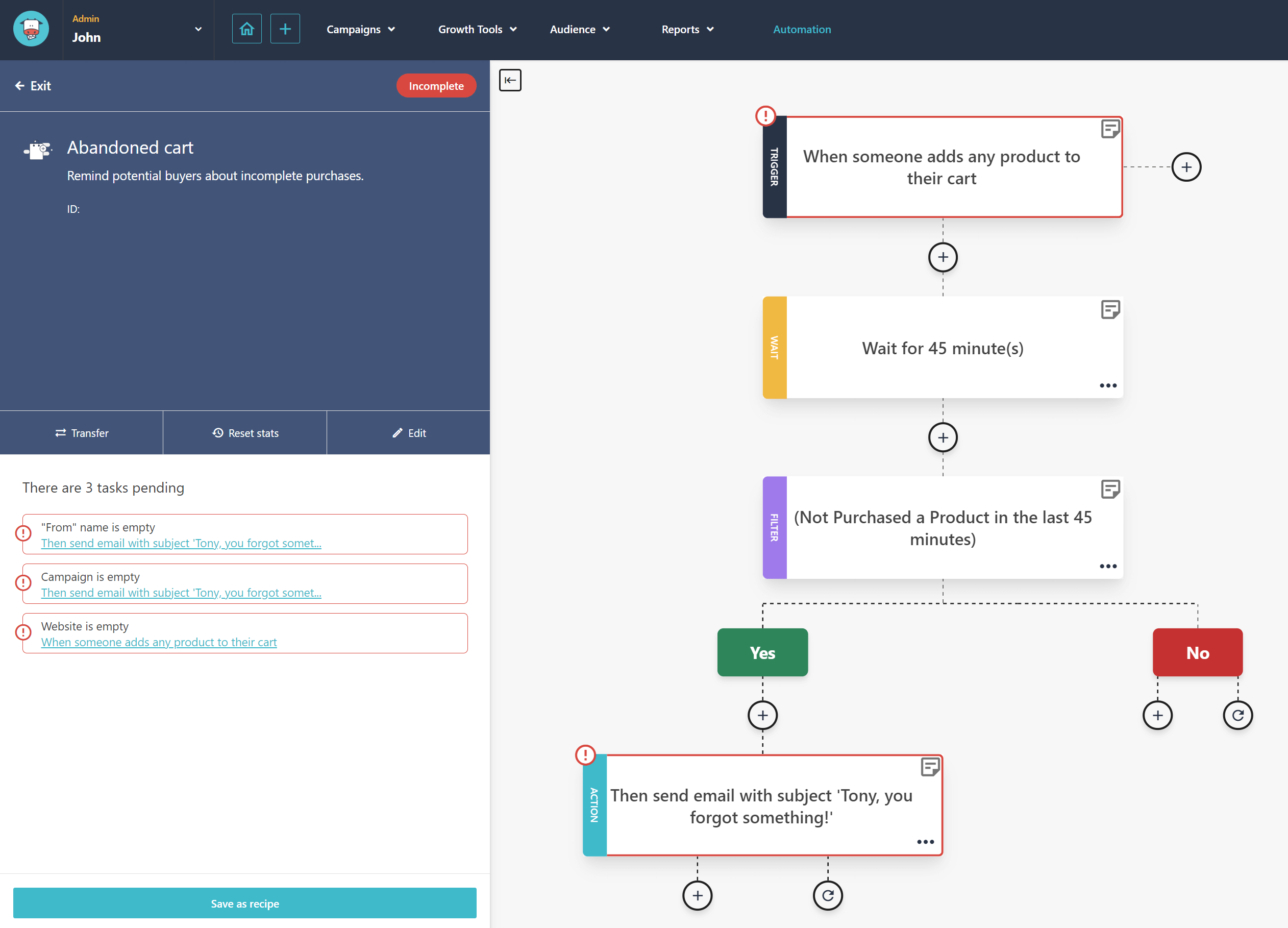
Now all you need is a stunning cart abandonment campaign to get your shopper back.
So, when your cart abandoners strike, you’ll have the perfect means to turn them into customers.
Here’s a cool example from Diesel:
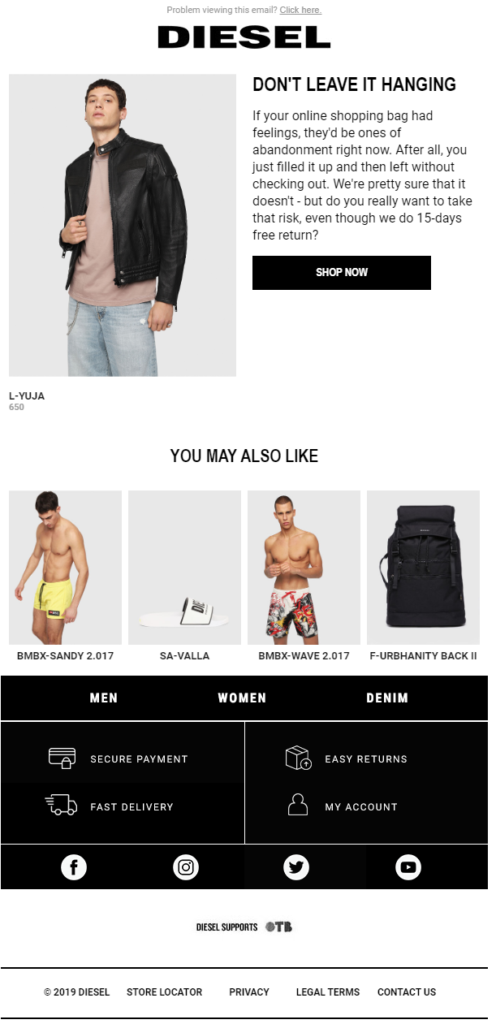
So, who’s ready for a brand new leather jacket?
Our pal Tony sure was!
5. Segment your new subscribers
One of the benefits of using an email marketing automation platform for your eCommerce business is segmentation.
Segmentation is a process that allows you to divide your subscribers into different groups based on similar interests.
For instance, you can group your female and male subscribers and create content tailored to each segment.
Furthermore, segmenting your audience will help you get started with email personalization and deliver more engaging content. So, how do you get started? Well, now that you know how to create an online form, segmentation is a piece of cake!
More specifically, segmentation is possible through your online form fields. So, the more you add, the more data you’ll collect about your subscribers.
That will allow you to divide them based on the information they give you and create different content for each segment. Now, let’s take a look at Buscemi’s form:

The eCommerce business has a straightforward popup where visitors can add their email, name, and choose their preference.
This allows Buscemi to personalize their campaigns and segment its new subscribers according to their interests.
For them, it’ll increase their engagement and desire to buy. For you, it’s a win!
The right message for the right customer
Segmenting your audience is incredible.
And along with personalization, you can create emails for your customers that will sweep them off their feet.
In this example by Lucchese, you can see two different eCommerce email marketing campaigns.
As you can see, the brand targets its female and male subscribers differently.

First of all, Lucchese uses different images to increase relevancy. But that’s not all that’ll give the brand better results.
When it comes to their product promotion, the company shows different products to their female and male customers.
That way, the campaign feels more natural increasing engagement and clicks.
To be a star of gender-based campaigns like Lucchese, you need to segment your audience based on demographics. Then, use a specific workflow to deliver the right message!
6. Get personal with email personalization
Did you ever get an email from an eCommerce store that was just too indifferent?
Well, we all did. Receiving plain, mass-sent emails is, unfortunately, still a tactic that lots of businesses follow.
You don’t need that and let me tell you why. In the age of personalization, you can’t deliver messages that aren’t relevant and personalized.
As statistics show, personalization is a powerful force that’s responsible for 1.75% of all email revenue. Numbers can show you how personalization is necessary for a successful eCommerce email marketing strategy.
Nevertheless, let’s take a more practical look at why you need it.
Personalized messages to wow your subscribers
Recently, I signed up for Nintendo’s newsletter.
Alas, Animal Crossing got the best of me!
Among others, Nintendo asked me for my birthday, which I gladly gave to them.
Fast forward a few months later, and I received this little thing from them:
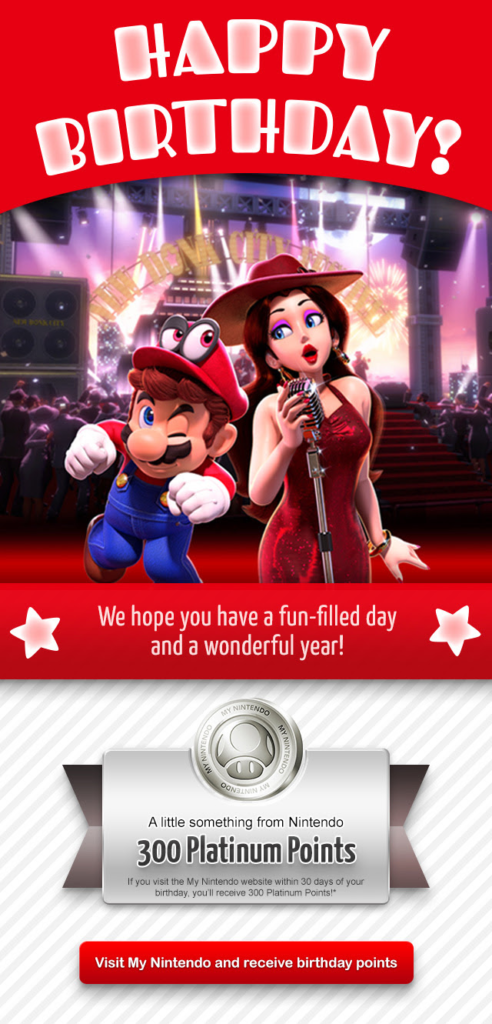
This birthday email is a prime example of personalization and automation working in tandem.
When your potential customers see this email, they’ll think that you specifically created the message for them.
The result? Your subscriber will feel appreciated and will gladly click on your CTAs!
In a study about email personalization, 71% of consumers believe personalized experiences can influence their decision to open and click-through an email.
While personalized messages resonate better with consumers, personalization is still experienced less by consumers in different countries.
If you want to get better results, consider personalization as an integral part of your email marketing for eCommerce.
Capitalizing on personalized messages will help you increase your engagement and boost your conversions. So, if you are about to send that mass-sent email campaign, just think about your customers’ preferences.
7. Mission: irresistible subject line
When you create a new campaign, your platform will ask you for a subject line. Those few words are more important than you think.
I know you’ll say, okay, it’s just a subject line, no one will look at it. Here, my friend, you’re wrong!
Your subject line is the Robin to your eCommerce email marketing Batman. If you don’t believe me, let’s take a look at the numbers, shall we?

With 47% of recipients opening email based on a single line, your subject line is more important than ever.
Consequently, you need a copy that will seem legitimate and trustworthy. To do that, avoid any spammy words that will lead your emails into the spam folder.
Also, don’t get wild with your subject line length, cowboy. The ideal length of a subject line should be less than 60 characters.
Even though it might seem short, subject lines between 1-20 characters will give you better open rates.

Keep in mind that your subject line is like a host trying to convince your subscribers to visit your fancy email.
If it’s truthful and exciting, then you will have a high-performing subject line for your eCommerce email marketing strategy.
Your ideal subject line…
Exists!
However, you need to discover what works best for your audience.
Even the fanciest subject lines might fail to work if they don’t resonate with your subscribers.
The perfect subject line for your eCommerce store should follow some basic rules.
Above, we talked about the length and spammy words. Now let’s see what else you need!
First thing first, your ideal subject line should have a feeling of urgency and to do that you need good old FOMO.
FOMO is an old practice that will influence your potential shoppers to click on your CTAs.
With the right amount of urgency in your subject line, no spammy words, and the ideal length, you’ll obliterate any hesitation.
Just keep in mind that you always need to refine your subject lines and find what performs best.
If you follow these tips, you’ll create your ideal subject line in no time! Here’s an effective eCommerce email marketing example from MVMT:

I guess now it’s time to get a new watch!
Personalize all the way
Email personalization can work its magic even on your subject lines! To personalize them, you only need the magic word.
I can assure you that there’s no hocus pocus in this one because the magic word is no other than your subscriber’s name! Just by adding a name, your subject lines can go from zero to hero. That’s it!
But wait! How can I find my subscriber’s name?
Well, remember your popup forms? Through your fields, you can capture every subscriber’s name. Then use your automation to add your recipient’s name and make them feel special.
Here, Seafolly beautifully infuses their subject line with their subscriber’s name and a reward:

A pleasant surprise indeed!
And then emojify it!
Of course, there are more things you can add to boost your subject lines. One of these things is to add emojis!
Emojis will make your message more unique and add emotion. Moreover, a friendly emoji will also increase your open rate.
Nevertheless, always keep in mind your audience. If you target a younger audience, emojis will fit your messages like a glove.
On the other hand, an older audience might not find them equally appealing. For instance, take a look at my inbox. Can you spot which subject lines stand out?

Adding emojis will help your email stand out, so make sure that your email marketing platform allows you to add them!
If you want something spicier, I’m proud to say that our genius devs have come up with a feature to untie your hands.
With a name inspired by that one intelligent monkey villain, E-mojo (Jojo) is perfect for helping you pick the right emoji. Just add your subject line and let E-mojo do the rest!
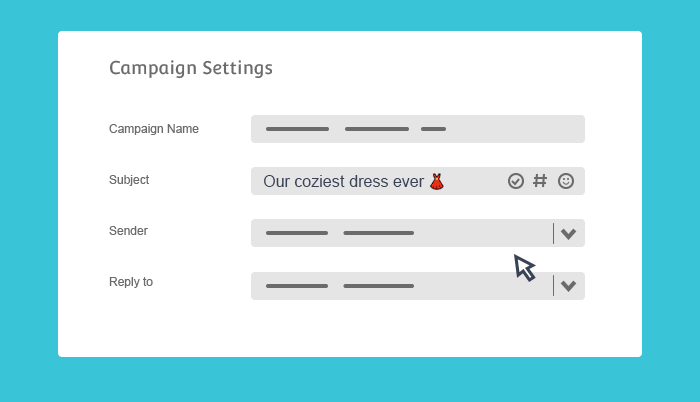
8. Email copy to leave them speechless
Writing effective eCommerce email campaigns is an art that not everyone masters at first.
While creating your email copy isn’t difficult, a simple “Buy my products, please” won’t work.
Email copy that feels pushy or is irrelevant will lead your email to your subscribers’ trash.
So, what can you do to avoid it? First of all, your email copy doesn’t need to be lengthy. You’re writing a simple message to convince your subscriber to take action, not an essay!
Sometimes, though, you might need those extra lines.
If that’s the case, then try to make it as entertaining and engaging as possible.
Take, for example, this promotional email from Chubbies. Their copy is always phenomenal!

The Black Widow got emails from a raccoon, so Earth’s mightiest swimmers don’t sound so crazy.
Or do they? Well, Chubbies uses its copy in perfect resonance with the product they promote.
Not only is it playful, but it also strikes a chord with their Avenger-loving audience. Using your copy cleverly will increase the performance of your campaign.
However, a brilliant copy alone can’t convince your subscribers to hit your CTAs.
For that, you need another Hulk-sized power. What is this power? Read on to find out!
9. Visual elements that rock
Visuals, assemble! Every successful team has their Hulk. For you, it is your stunning visuals.
As visual creatures, consumers rely heavily on visual stimuli to determine whether something is worth their time. The more appealing your visuals are, the better they will capture your potential shoppers’ attention.
According to statistics, visuals are crucial for your marketing strategy, with 69% of marketers considering it a necessity.

Visuals are essential for boosting your emails. However, you shouldn’t overuse them.
For instance, using excessive visuals will give you the opposite effect, overwhelming your subscriber. Nail your email campaign with high-quality images or gifs and always use them to support your copy.
You know what they say: a picture is worth a thousand words! So, gather your creativity and fuse your eCommerce email marketing campaigns with some genuinely awesome pics!
Here’s an example from Redbubble.

10. Convert your audience at first CTA
It’s now time to talk about your CTAs! In my experience as an eCommerce email subscriber, I’ve seen numerous CTAs.
Some of them were indifferent. Others were hard to find. Then again, others were just “chef’s kiss.” I guess that explains my shameless Funko pop collection!
While your subject line, copy, and visuals will convince your subscriber to engage with your campaign, without the proper CTA, you won’t convert them.
To nail your email marketing endeavors for your eCommerce store, you need the right recipe. Get ready. It’s time to get from CTA newbie to this:

Color, copy, and action!
To be honest, that’s all you need to create a high-converting CTA. When it comes to color, you need to make sure that your CTA button stands out.
Choose bright colors like red to draw attention and place them in a location where your subscriber won’t miss them. Of course, you should also invest in excellent CTA copy as well.
Avoid boring-looking copy to increase your shopper’s desire to click on your button. Do that by coming up with playful word combos or use urgency to get them to click.
Here’s how Leesa uses a common word to create urgency and inspire the shopper to convert:

Brightly colored CTA that’s hard to miss? Check! Engaging copy that’s to the point? Also check!
More conversions? That’s a double check! Your CTAs can make a difference and change the course of your eCommerce email marketing strategy.
So, always pay attention to your CTA colors, your copy, and their placement in your campaigns. Now you’re ready to convert more! Hurray!
11. Email deliverability
Two words but with great importance! If you don’t know what this is about, then let me enlighten you.
Email deliverability is a term that email marketers use to describe the process of successfully landing an email campaign into a subscriber’s inbox.
Many factors can impact your deliverability. More specifically, email deliverability goes hand in hand with your sender reputation.
Imagine sender reputation as a score assigned to you. This score is influenced by the quality of your email campaigns, their frequency, and volume.
Furthermore, your score also changes based on your subscribers’ interaction with your campaigns.
So, if your subscribers flag you as spam, then this is terrible news for your reputation.
Having a good sender reputation is of paramount importance since it determines whether ESPs will deliver your messages to your customers or not.
As you become more and more experienced with eCommerce email marketing, email deliverability will become more clear.
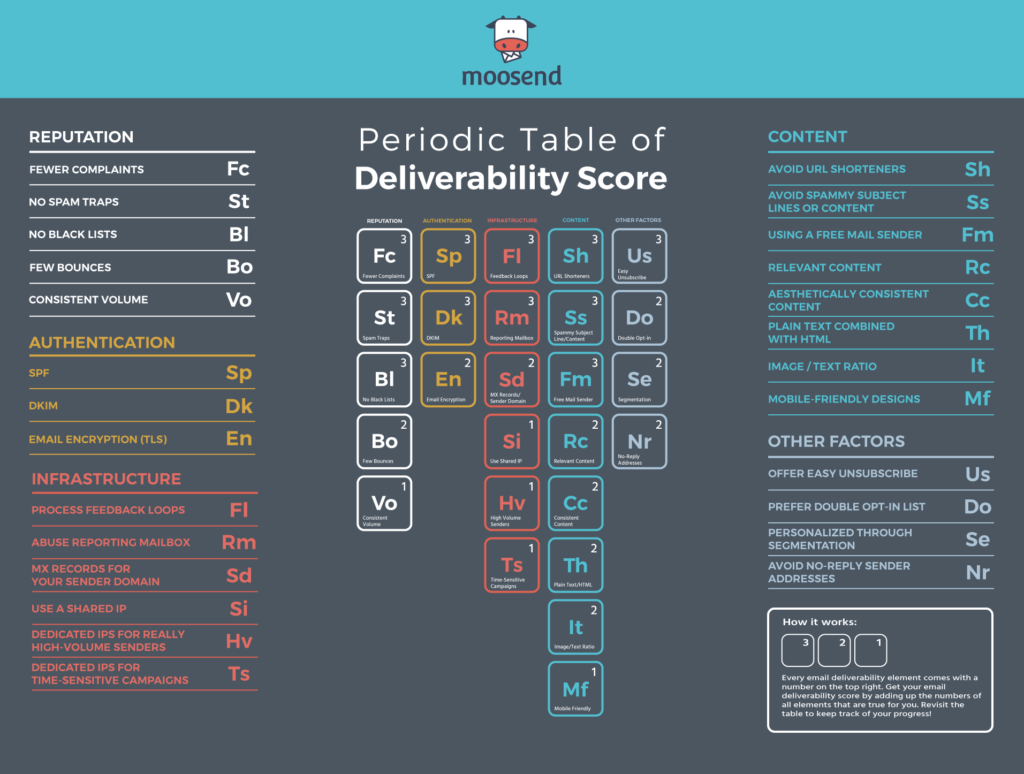
For the time, you should focus on the following:
- Create a regular, consistent schedule for your email campaigns.
- Maintain list hygiene by regularly cleaning your mailing list.
- Avoid getting flagged as spam. The easiest way to do it is to avoid spam words.
- Don’t get blacklisted because this will harm your sender reputation the most.
With these in mind, you will nail your deliverability and ensure that your emails pass through every spam filter.
12. Integrate eCommerce email marketing with social media
Everyone’s on social media these days! Okay, not everyone, but 3.5 billion people already use social platforms.
That’s almost half of everyone!
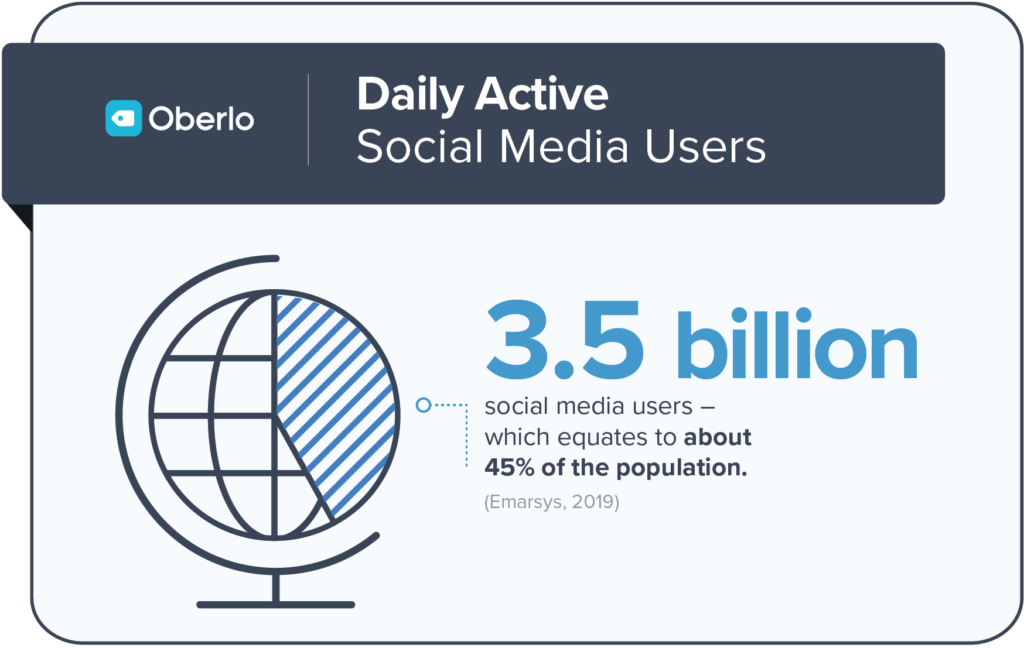
With so many users on social media, social media will allow you to jumpstart your eCommerce email marketing.
Let’s see how! First of all, users can follow your brand on social media with a click.
For instance, when you set up your Facebook profile, new followers will discover and hit the follow button. Also, you have Facebook Lead Ads to give you a helping hand.
Of course, for that, you already need to have a social media marketing strategy in place. Then, you can leverage your social accounts and your social engagement to expand your mailing list.
For instance, Moonpie cleverly uses its Facebook tabs to promote their email signup:

Integrating social media with eCommerce email marketing is a piece of cake.
Just make sure that you don’t sacrifice your main profile CTA to promote your signups! Similarly, you can use other social media platforms to let your followers join your list.
For instance, you can leverage your Instagram bio to redirect your follower to a newsletter signup form.
Furthermore, you can organize an Instagram giveaway to collect your followers’ email addresses and reward them at the same time! The possibilities are endless when you combine social media and email marketing for eCommerce!
So, if you want to enjoy the perks of their collab, make sure to integrate them when the time’s right.
13. Give your mobile users some love
Know what else is popular apart from social media? Mobile devices! Almost everyone out there has a mobile device of some sort.
More importantly, consumers use their phones to communicate with their peers, go on social media, and read emails!
The busier people get, the more they tend to use their mobile devices to simplify things. So, opening their mobile email app is more convenient for them now.
However, while the rise in mobile devices is evident, there are still email campaigns that fail to convert.
Why? Well, among others, these campaigns might not be responsive enough. According to Salescycle’s email marketing statistics, 42.3% of recipients would just delete unresponsive emails.

Ouch! That’s a lot! Worry not, though, because getting the hang of responsive email design isn’t that hard.
The main principle here is that your emails should always look perfect regardless of screen size and resolution. Here are some things you need to consider when you create a mobile-friendly email:
- Come up with short subject lines. Not every mobile device has the same size. A longer subject line might not display correctly on a smaller screen.
- Leverage your pre-header text to give more information about your campaign. If your mobile-first users know what you send them, they’ll open your campaign more easily.
- Your images and CTAs should be optimized for every mobile device.
- Opt for a clean design and, if necessary, reduce your copy.
- If you clutter your mobile emails, they’ll end up in your subscribers’ trash folder.
Here’s an example of a responsive email campaign from ASOS.
See how everything is neatly displayed to avoid frustration and improve the subscribers’ experience?

14. Test, Test, Test!
Up to now, we saw the things you need to consider when you get started with eCommerce email marketing.
However, your work’s not done yet. When you create your marketing campaigns, you need to test everything. You might ask, isn’t it enough that I spent time making all these?
Well, if you don’t put your campaign elements to the test, then you won’t know if something else would’ve worked better.
A/B Testing (or split testing) is an experiment where you test different variations of your original design (control). The purpose of split testing is to find out what your subscribers like best.
You can test everything, but here are the things you should focus on more often:
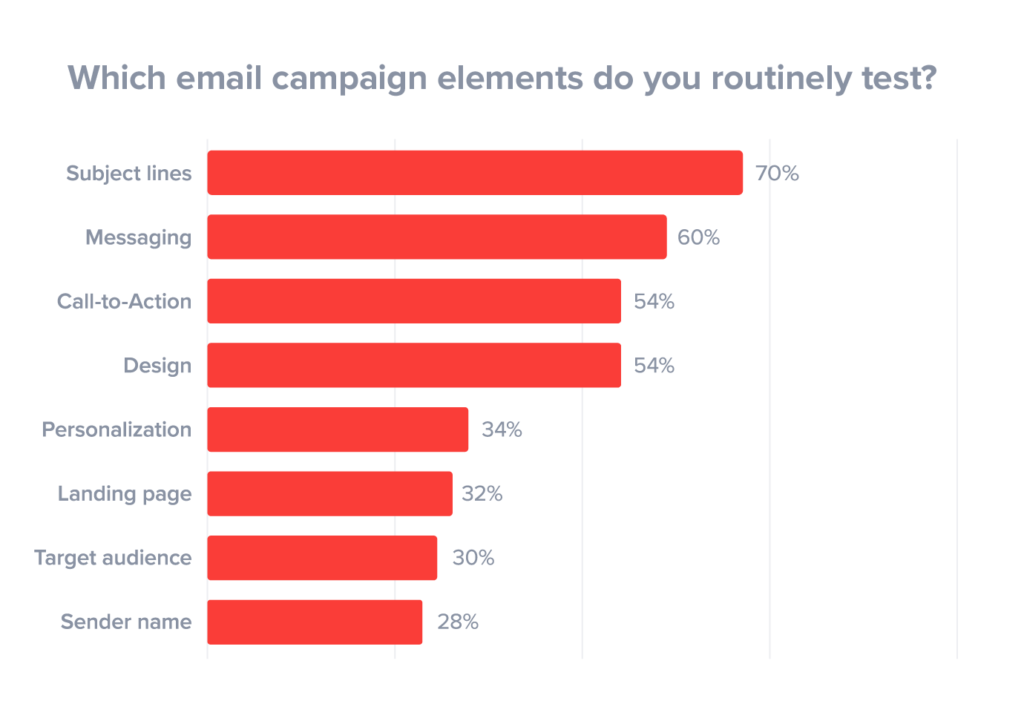
When you do, you can modify your email campaigns accordingly and get more opens, clicks, and conversions.
You can easily run an A/B test through your email marketing platform. For example, you can create an A/B campaign through our platform and distribute it to a specific part of your list.

Then you can monitor your campaign performance through analytics and come up with the ultimate email design.
Don’t be afraid to change your elements even if you think you’ve found the perfect combo. Consumer preferences change all the time. So, make sure to keep up with them!
Note: Be sure to change one thing at a time when A/B testing! Otherwise, you won’t know what specific element influenced your improved results.
Best eCommerce email marketing campaigns to fuel your inspiration
Throughout our post, you saw numerous email campaigns that will help your eCommerce store reach the top.
Sometimes, your inspiration reservoir might run low. Worry not, though, because I got you covered!
So, are you ready to get inspired?
1. Welcome Email
Subject line: You’re in! Take 15% off your first order.

The good old welcome email is a must for every eCommerce email marketing strategy.
EM Cosmetics’ example here has all the necessary elements to call this a successful campaign.
First of all, from the subject line to the email body, the message is friendly and informative. New subscribers also receive a welcome gift in the form of a 15% discount.
This alone will incentivize them to grab the offer and get one step closer to conversion. Short, beautiful, and with the right offer, EM Cosmetics nails their welcome email and inspires their audience to buy.
2. Newsletter Signup Email
Subject line: Account verification

First of all, this “Hej” from IKEA always gets me!
Confirmation emails like these are pretty simple. You set them up and then forget them!
After all, that’s the magic of automation! Newsletter signup emails are perfect for verifying your new subscribers and maintaining a clean mailing list.
Also, sending one will show your audience that their subscription process was successful. Newsletter signup emails can be simple or more complex.
The sky’s the limit!
3. Cart Abandonment Email
Subject line: Marilia, Still Thinking About It?

Cart abandonment happens, and there’s nothing you can do about it.
Or is there? Well, with the right eCommerce email campaign, you can restore more than your revenue!
I’m talking about restoring your customers’ faith in your store and the fantastic deals it can give.
Here, MAC’s cart abandonment email is a great example to help you kiss cart abandonment goodbye.
How? The recipe is simple: free shipping! Or an extra discount!
Also, make sure to show your abandoners why they need your product through a fantastic copy. MAC knows the drill when it says, “You’d look fierce in that.”
4. Re-engagement Email
Subject line: We missed you, Marilia!
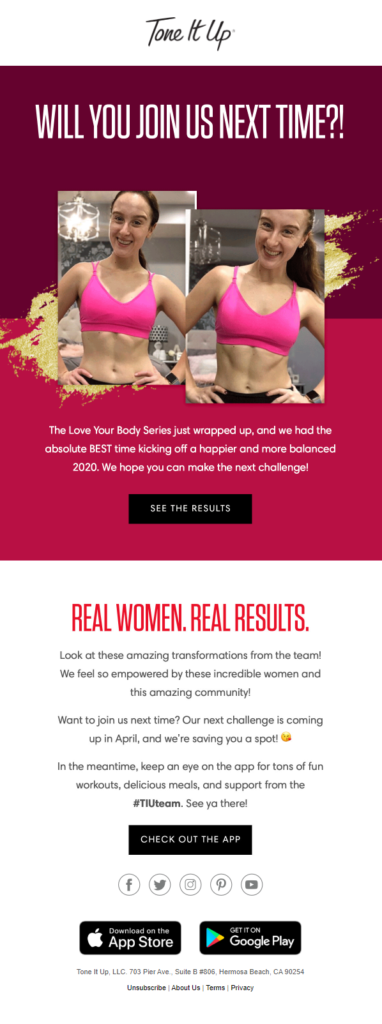
At some point, your subscribers will forget about you.
That’s a bummer!
However, if you dealt with cart abandonment, then re-engaging them with your brand is not difficult. Tone It Up, for instance, has come up with the ultimate re-engagement campaign.
Firstly, their subject line feels personal, and you can’t ignore it.
Also, Tone It Up has another secret. To re-engage its subscriber, the brand leverages the power of social proof.
Along with the visual proof, the brand uses an inspiring copy by inviting its audience to take part in their challenge.
Finally, the CTA is there to recapture their attention and get them to take action. Easy-peasy!
5. Promotional Email
Subject line: Shh… This Sale Is Super Secret
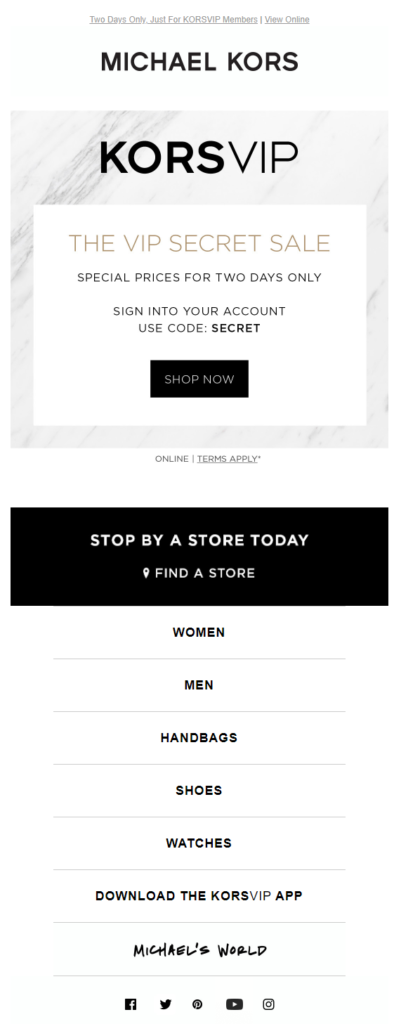
Promotional emails are your eCommerce bread and butter. However, why not spice things up with a super-secret sale?
Consumers love sales. So, with the right incentive, you can turn your promotional emails into a major revenue-driving tool.
For Michael Kors, their VIP sale email has everything a shopper needs to see.
From the subject line, it is clear that there’s something awesome and super-secret waiting for them. Along with it, the brand uses its copy to create urgency, and you know what this means, right?
Shoppers have two days to get products at amazing prices! The offer is just too irresistible to miss.
6. Anniversary and Birthday Email
Subject line: Marilia, let’s celebrate YOU

This campaign from bareMinerals is just fab.
Not only does it have a personalized subject line that will make the subscriber click, but it’s also based on a unique event: your subscriber’s birthday!
Campaigns that celebrate special occasions like birthdays or anniversaries can be very successful and profitable.
The reason? Everyone wants to treat themselves to something awesome on their special day.
Consequently, giving discounts and rewards on your subscribers’ birthdays will be easier to convert them. And like bareMinerals here, you can also use your birthday campaign to promote other things.
Let’s say your super cool loyalty program!
7. Refer a friend Email
Subject line: Thanks for spreading the MOO love!
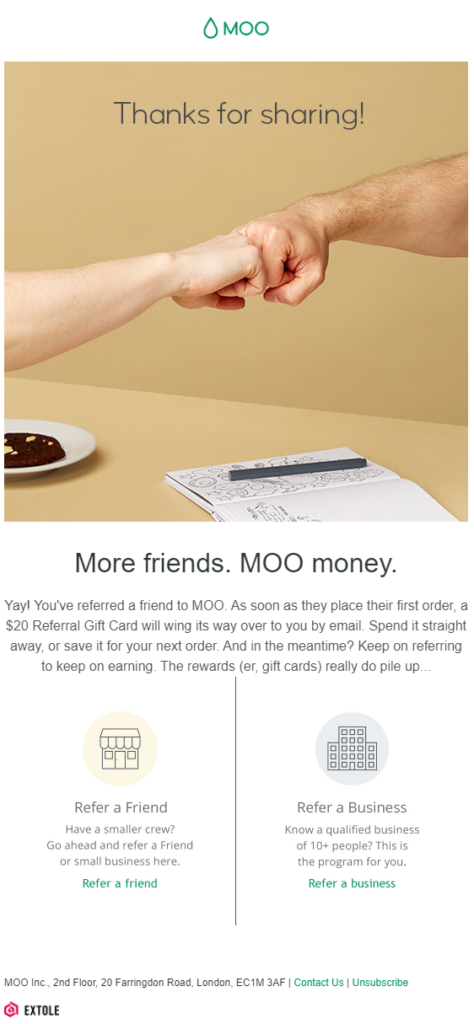
First of all, referral emails will pave the way for extra revenue. How? Just take a look at MOO’s email.
By giving your subscribers a nice referral gift, you can get them to bring their friends.
To leverage the power of referral emails, make sure that you show your audience why they need to refer a friend. Of course, to do that, you first need to provide them with excellent customer experiences.
When you do, send them a fantastic referral gift and, like MOO, see your audience and revenue grow!
8. Order Confirmation Email
Subject line: Order Confirmation
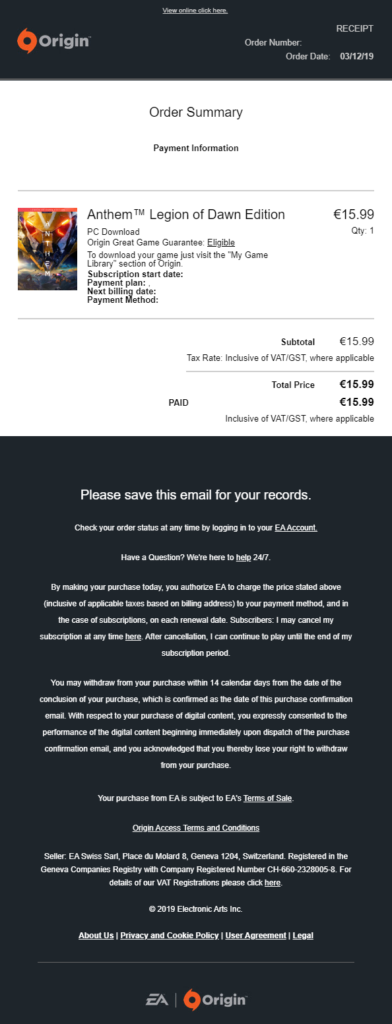
When your customer buys something, you need to send them an order confirmation email.
That’s necessary for every legitimate eCommerce business. Failing to send order confirmation emails might frustrate and puzzle your audience.
However, your emails don’t need to be anything special. Just include an order summary and relevant information, and you’re done.
Electronic Arts, for instance, offers customers extra information about their purchases in general. What’s more, your order confirmation emails should arrive after someone makes a purchase.
So, make sure you set up an automatic workflow to keep your customers updated.
9. Recommendation Email
Subject line: Gear Picked Just For You: UA Perfect Headband & More…

Recommendation emails are your eCommerce email marketing strategy’s secret weapon.
They work amazingly well because they shower your subscribers with relevant items. When data and automation are involved, you can make your product recommendations unstoppable.
For instance, if a customer browses your headband and beanie collection, you can send them an email with relevant suggestions.
Also, throw a super discount, and voila! Under Armour has a great recommendation email to inspire their shopper to buy from their collection.
More specifically, the subject line has the right amount of personalization to convert them in a breeze.
10. Seasonal Email
Subject line: Can’t find the right words? ❤️

When it’s beginning to look a lot like a holiday, it’s time for a seasonal campaign!
Seasonal campaigns go hand in hand with famous holidays like Christmas and Black Friday. While they are a once-a-year thing, setting up a holiday campaign will help you boost your revenue beyond measure.
Happy Socks knows how to celebrate Valentine’s Day with a beautiful campaign and relevant recommendations.
Your audience is always ready to celebrate. So, make sure to target it with an email campaign that rocks!
Ready to rock ‘n’ roll
They grow up so fast… I mean you! Now, you have all the necessary knowledge to get started with email marketing for your eCommerce business!
While there’s more to learn, I believe that you are now ready to create your first campaigns, automate them and increase your revenue.
So, what are you waiting for?
Get on your email marketing platform, create an out-of-this-world email, and stun your audience!
And as always, may the marketing Force be with you.






 Published by
Published by
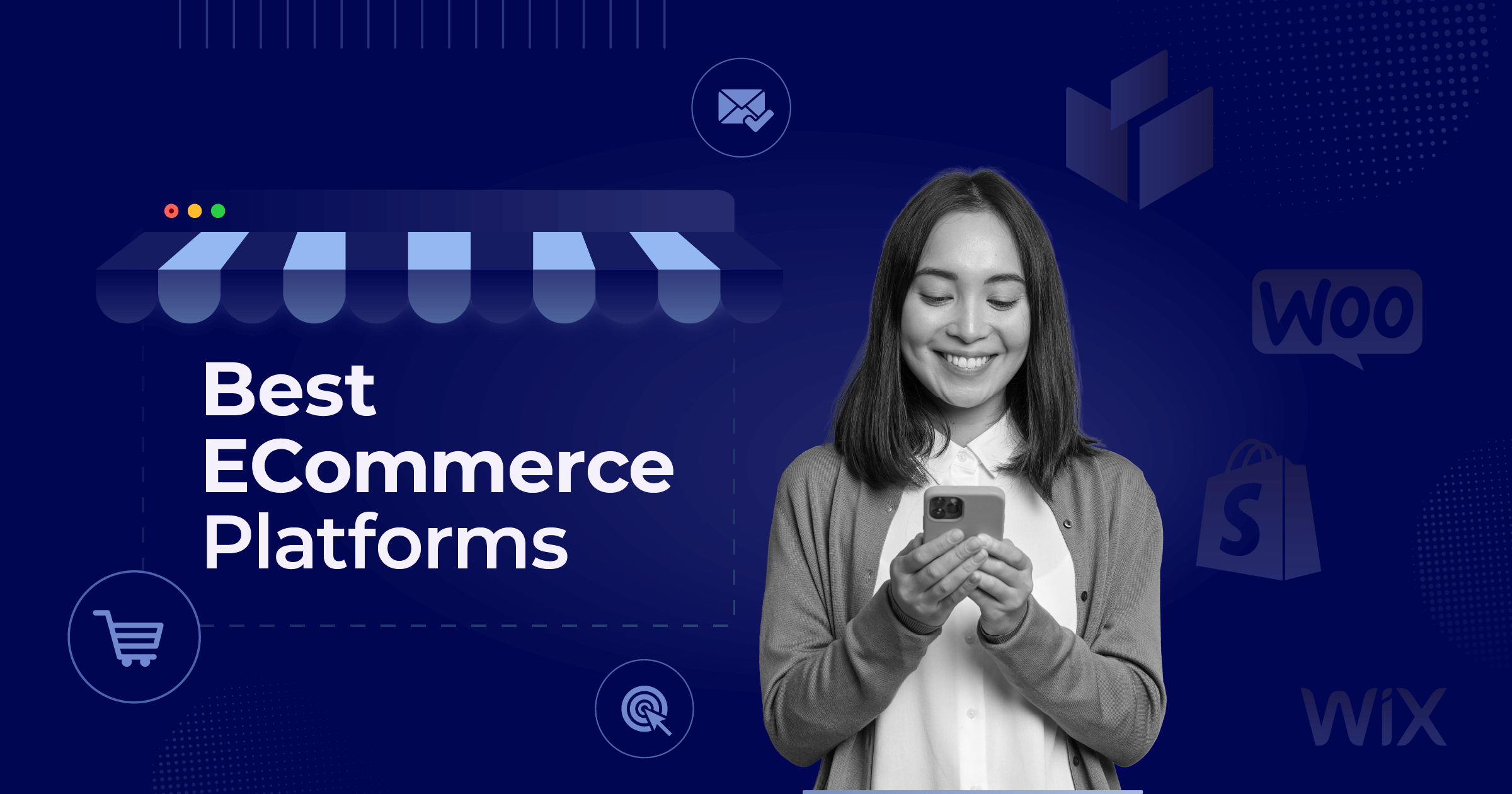
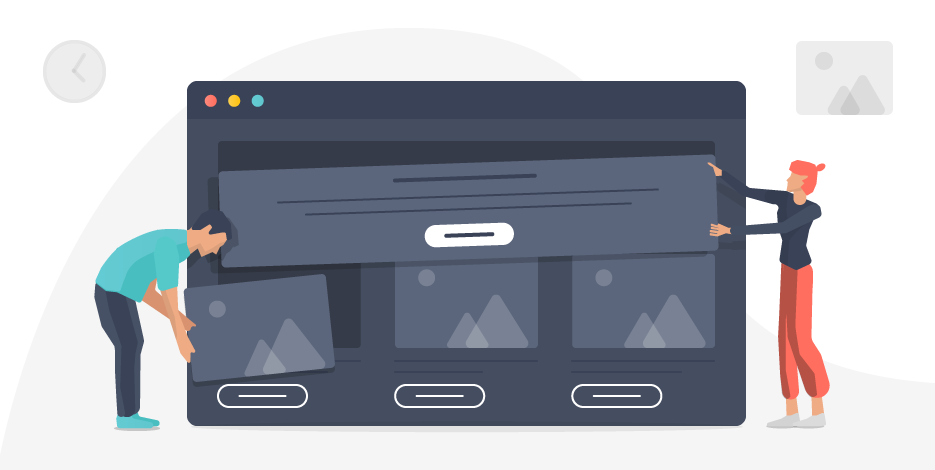
 Published by
Published by